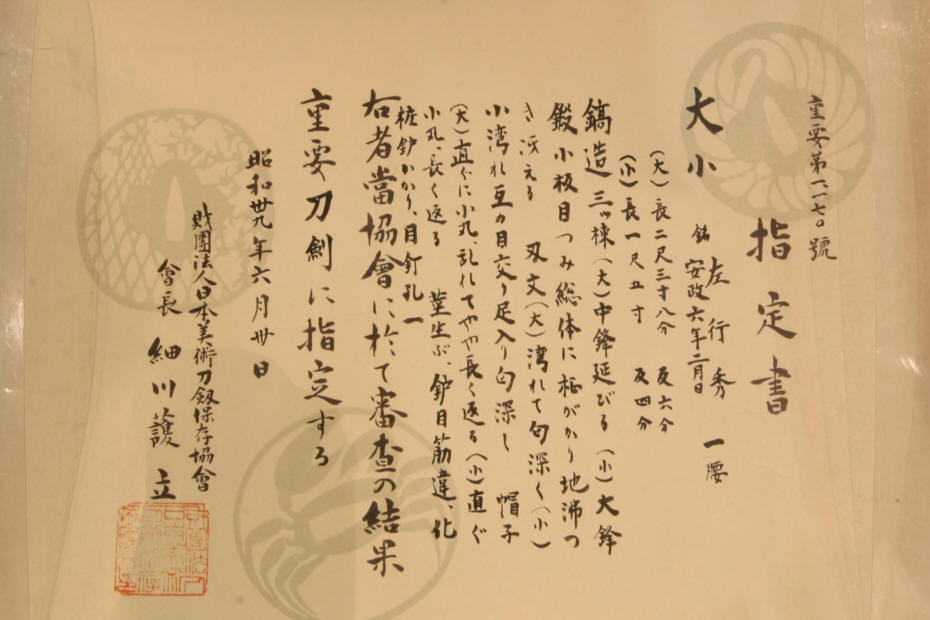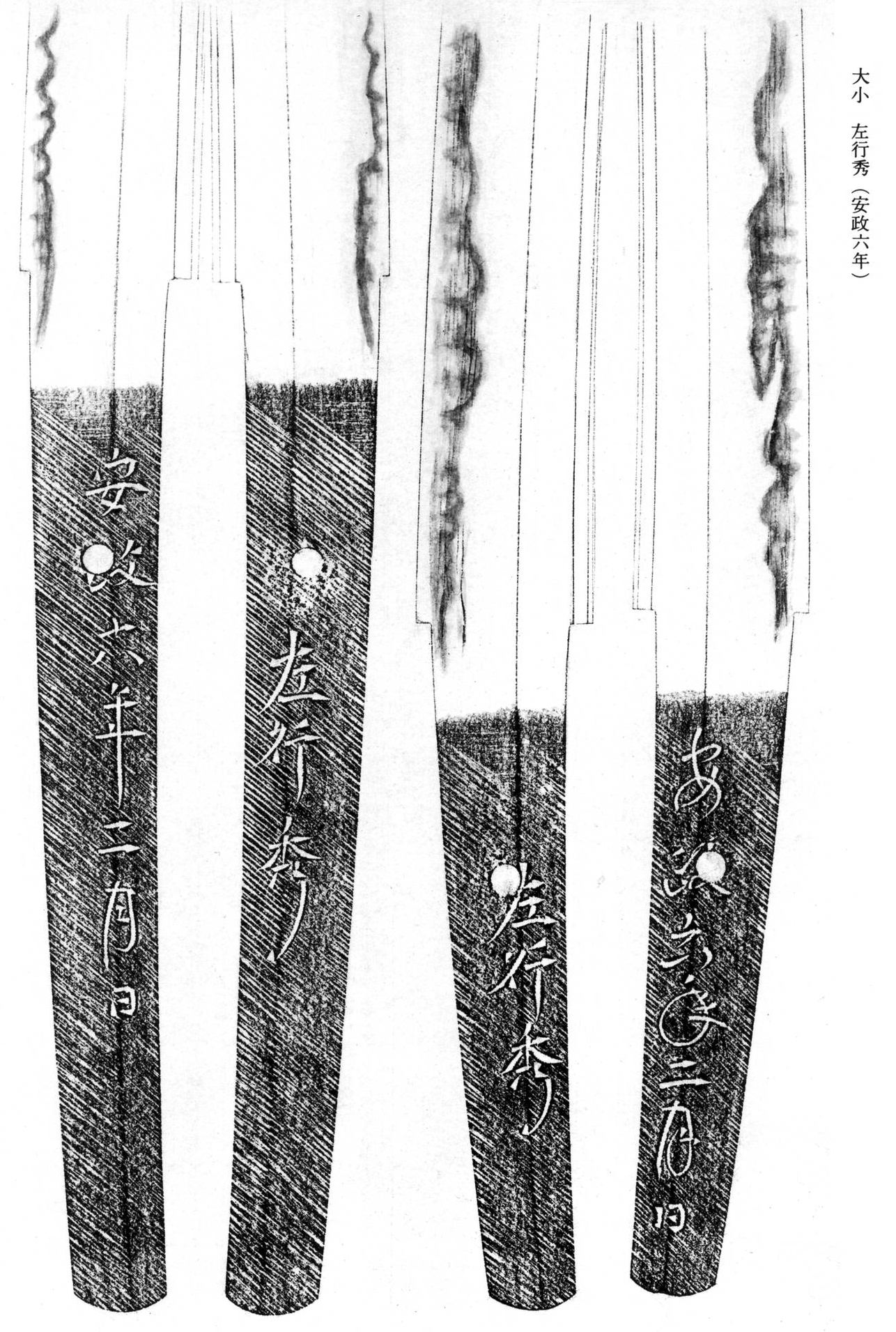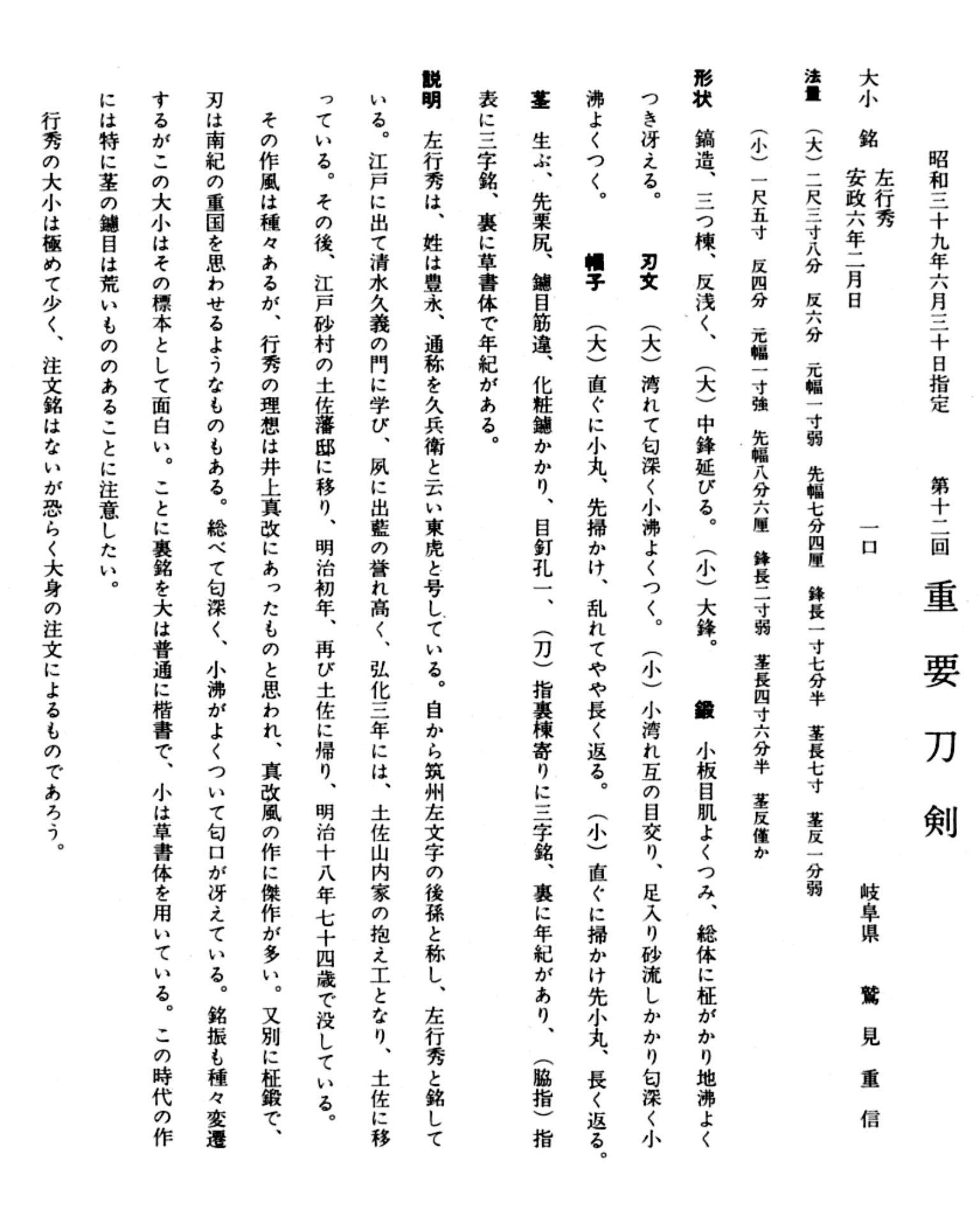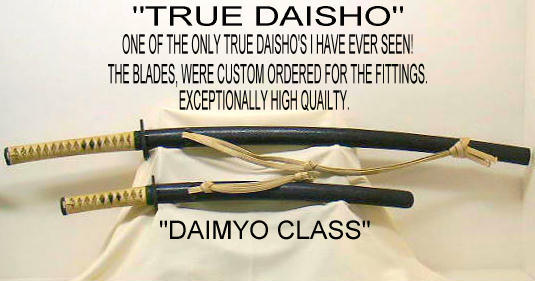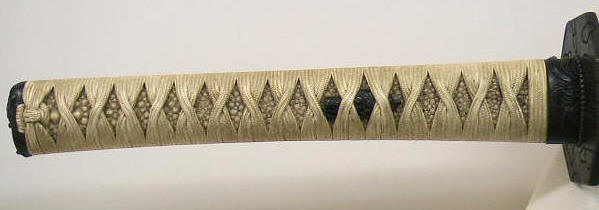Gallery Page (Display Only)
Sa Yukihide
One of the foremost makers in history
“Both blades certified as one sword, as only true daisho’s are”
NBTHK Juyo Token
Juyo Zufu translation:
J?y?-T?ken at the 12th J?y? Shinsa held on June 30, 1964
Daish? , mei : Sa Yukihide – Ansei rokunen nigatsu hi (???????????) – “Sa Yukihide, on a day of the second month of Ansei six (1859)”
Gifu Prefecture, Washimi Shigenobu (????)
Measurements
Dai : nagasa 72.1 cm, sori 1.8 cm, motohaba 3.0 cm, sakihaba 2.2 cm, kissaki-nagasa 5.3 cm, nakago-nagasa 21,2 cm, nakago-sori 0.3 cm; Sh? : nagasa 45.4 cm, sori 1.2 cm, motohaba 3.0 cm, sakihaba 2.6 cm, kissaki-nagasa 6.0 cm, nakago-nagasa 14.1 cm, only very little nakago-sori
Description
Keij? : shinogi-zukuri , mitsu-mune , shallow sori , dai with an elongated ch?-kissaki , sh? with an ?-kissaki
Kitae : densely forged ko-itame that tends overall to masame and that features plenty of ji-nie , the steel is clear
Hamon : on the dai a ko-nie -laden notare with a wide nioiguchi , on the sh? a ko-nie -laden ko-notare with a wide nioiguchi that is mixed with gunome , ashi , and sunagashi
B?shi : on the dai a sugu with a ko-maru-kaeri and hakikake that runs back as midare and in a relatively long manner, on the sh? a sugu with a ko-maru-kaeri and hakikake that runs back in a long manner
Nakago : ubu , kurijiri , sujikai-yasurime with kesh? , one mekugi-ana , the katana bears on the sashi-ura side and towards the mune a sanji-mei and is dated on the other side, the sh? bears on the sashi-omote side a sanji-mei and is dated on the other side in cursive script
Explanation
Sa Yukihide’s (???) real name was Toyonaga Ky?bei (?????) and he also went by the art name T?ko (??, lit. “Tiger of the East”). He chose his name as a swordsmith, Sa Yukihide, because he claimed to be a descendant of the Chikuzen-based master Samonji (???). Yukihide was from Chikuzen as well, but went to Edo to study with Shimizu Hisayoshi (????). He greatly surpassed his teacher and was employed in K?ka three (??, 1846) by the Yamanouchi (??) family and moved to Tosa, which was ruled by this family. Some time after that, he relocated to the Edo premises of the Tosa fief, which was located in the Sunamura district (??). In the early years of the Meiji era (??, 1868–1912), however, Yukihide returned to Tosa and died there in Meiji 18 (1885) at the age of 74.
Yukihide worked in a variety of styles, but it appears that his ideal was Inoue Shinkai (????) as many masterworks exist, which are interpreted in the style of the Shinkai. Yukihide also made blades forged in masame that are hardened with a ha , which reminds us of works by Nanki Shigekuni (????). In general, Yukihide’s blades display a wide and clear nioiguchi and are ko-nie -laden. Yukihide’s signature changed over time and it is interesting that this daish? reflects the smith’s changes in signature styles. That is, the dai is signed and dated in block style, whereas the date of the sh? is executed in cursive script. It also must be pointed out that at the time period this daish? was made, Yukihide applied particularly rough yasurime .
Daish? by Yukihide are extremely rare. This pair is not inscribed with the name of a client, which might suggest that it was ordered by a fairly high ranking person.
This Sword is not available for purchase.
If you wish to purchase a Japanese Sword, please view our Nihonto for sale page or contact us directly via email or by telephone at 1(608) 315-0083 any time. Please include specifics of what you seek, i.e.: Katana, maker, era, price range, etc.
Pictures and content may not be copied without the express permission of samuraisword.com ©


